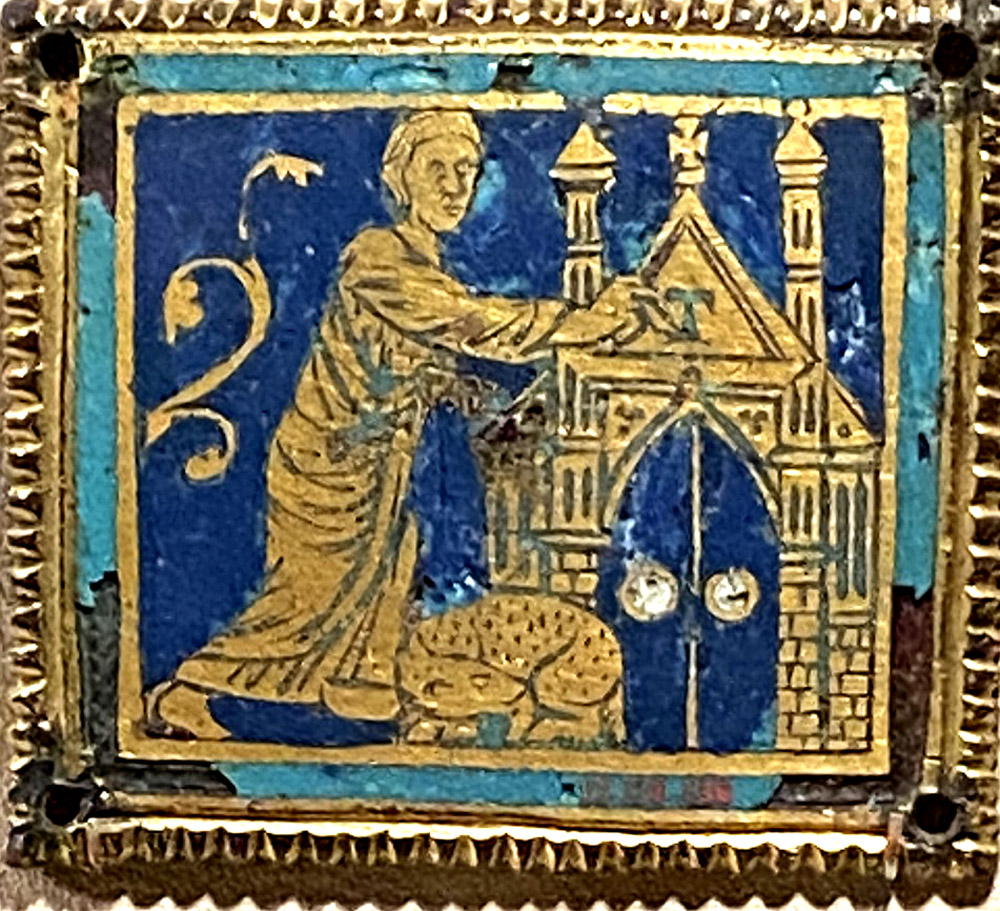Plaque with Marking of the Door with the Letter Tau (Exodus 12:5-7)

Cologne, circa 1200
Champlevé enamel on gilded copper
Metropolitan Museum of Art, accession no. 17.190.438
This image represents a Christianized interpretation of Exodus 12:5-7:
And it shall be a lamb without blemish, a male, of one year: according to which rite also you shall take a kid. And you shall keep it until the fourteenth day of this month: and the whole multitude of the children of Israel shall sacrifice it in the evening. And they shall take of the blood thereof, and put it upon both the side posts, and on the upper door posts [Vulgate superliniarium, "lintels"] of the houses, wherein they shall eat it.
In the Christian reading of this passage, the unblemished lamb is Christ, the innocent victim whose blood saves the faithful. The houses signify his home, the Church, and the blood on the doorposts and lintels is the sign of the Cross.1 Accordingly, the lamb in this image represents both the literal lamb of the ancient rite and Christ, the "lamb of God." The artist represents the "houses" of Exodus 12:7 with their doorposts and lintels as a Christian church with its belltowers and tympanum, which instead of blood the Christian marks with a tau, the sign of Christ's cross.
View this image in full resolution.
Also read about images of Moses.
Photographed at the museum by Richard Stracke, shared under Attribution-NonCommercial-ShareAlike license.
1 These notions are commonplace in Christian exegesis of Exodus, but note especially Rupert of Deutz's
remark (Glossa Ordinaria I, 593)), "In the spiritual sense what else is the command for the blood of a lamb but the blood of the true lamb, that is, Christ the Son of God? The sign placed on the houses means that he is not hidden somewhere but is in the open everywhere, so that he may free us from the hand of our persecutor, the devil." For pseudo-Bede (Migne XCI, 307), the historical passover meal in Egypt is "a figure of the New Testament pasch in the Church" and the Hebrews' marking of blood on the doorposts prefigures the Christian practice of making the sign of the cross on one's body.